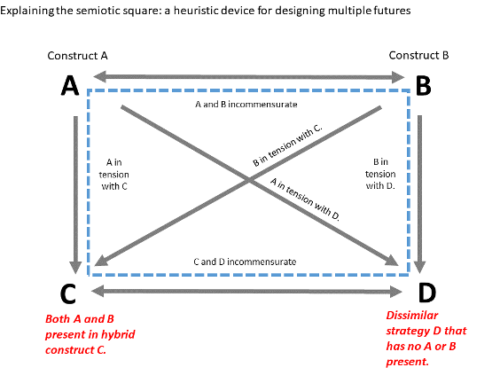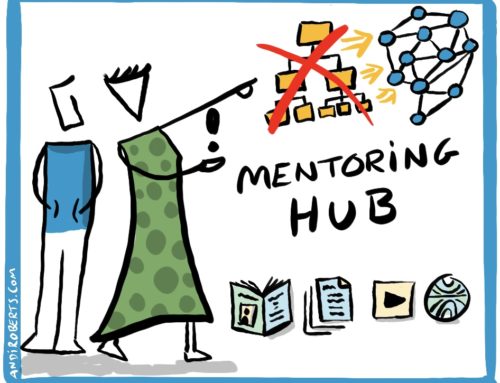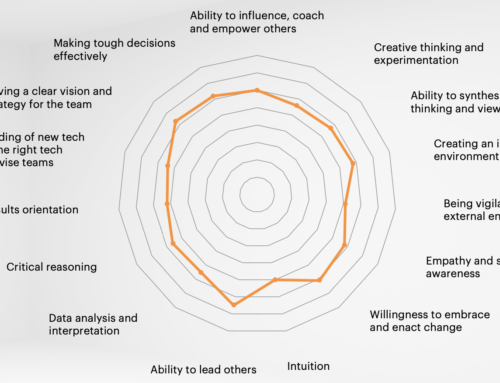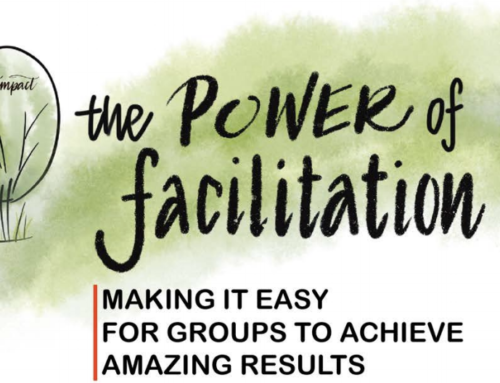This “hub” page contains a range of resources around habit change.
In order you will find sketch notes, book summaries and then articles – all denoted by different icons
I have been a big fan of BJ Foggs work for quite a few years now and have written blog posts on his ideas previously. He has recently launched a book with his key models, tools and techniques around creating behaviour / habit change. To read more about his work visit HERE.
Here is a very quick sketchnote that contains some of the core ideas from his book:
This is another sketchnote done whilst on a flight. “How to create good habits” is a pretty easy read with some key messages from research around habit forming from Cary Bergeron.
These are the raw notes I made as I read “Habits of change: how to change your habits when change is difficult” by Sam Davies Website. This was a free ebook I downloaded a while back from Amazon via daily free books website. The chapters here are from 1 to 5.
1 – Introduction to habits
Defined 1908 B R Andrews in American Journal of Psychology. Retired Soldier ” attention” story.
Behhaviour that is no longer conscious.
40% daily actions are habits. Millars law – 5-9 bits of information. Autopilot is important
Focus on the process dependance not the goal(outcome dependance). Not hitting goals creates negative spiral. Have goals, but don’t focus on them.
Habits trump willpower everytime
Conserve wilpower for habits. Marshmallow study.
Self licensing – bar of chocolate after exercise. Any “deserve”self talk
Recognising self licensing requires good self awareness
Ironic rebound effect -don’t think of white polar bear. Wegner: more you try and surpress a thought the more it will come. Brain in 2 modes- operator and monitor decision fatigue breaks seperation down.
Surfing the urge: become fully present, notice thought, feelings and body and expect urge to pass.
Remind ourselves failure happens – do not be over critical
Pain / pleasure principle: guiding principles. Neuro associations:1) brain searches for uniqueness 2) looks for whats happening simultaneously (law of recency) and connects the dots 3) looks for what is happening consistently (recurring patterns). Eg pleasure of chocolats. Emotional threshold creates trigger.
Habits is about turning shoulds to musts
“How can I change my habits when I am so busy” Bo Bennett : not managing your time and amking excuses are two bad habits. Dont put them together by claiming you don’t have time”
2 – The science of habits
Regular behaviour is worth habitualising – brain chunks patterns in Basal Ganglia. Basal ganglia looks for cues to “run” habit aka autopilot
Habit loop: Duhigg states habits are cyclical: cue, a routine and a reward.
CUES: VAKOG
ROUTINE: Cues i.e. morning alarm, create actions
REWARDS: conscious or subconscious
TV adverts uses loops to entice
3 – The Motivation for habits
Questions
1-What habit do you want to form and why? – clarity around what you really want is key. Affective forecasting ( cognitive bias) how we will feel in the future – good at negatives (Prune icecream). Impact bias -ability tp predict accurately. Move towards positive rather than away from negative.
2 -What pain have you linked to forming this habit in the past (if any) – ecology check (nlp) will it affect others or be impacted by them? More pain with habit than not doing it. Bernard Baruch”be who you are and say what you feel, because those who mind don’t matter, and thos who mattrr don’t mind”
3 – What will it cost you if you don’t form this new habit, now? – leverage on self required to maintain. Pain at emotional level. Even if just disatisfaction with self.
4 – how does that make you feel – follow on from 3
5 – what pleasure will you recieve from forming this habit, now? – connect to postive emotions
6 – same as 4
4 – 10 step process for forming a new empowering habit
Three levels of changing a habit: identity, behaviour and appearance.
Develop belief that you can start and commit to behaviour rather than just doing behaviour (opposite to mini-habits)
Common obstacles:
- Unresourceful emotional state.
- A scarcity of resources.
- Travelling
- A change in routine
5 – Choose a reward that will be worth attaining
Intrinsic vs extrinsic: Generally intrinsic (for self) are more powerful.
Use the power of anticipation to reinforce motivation AND when you have the reward, remind yourself of the habit formed.
6 – Give yourself public accountability
Sharing publicly increase the pressure for result and self accountability.
Consider a reasonable forfeit if habit / target is not reached.
Make yourself accountable for the habit, not the result.
Pick someone to be an accountability partner who won’t let you off the hook.
7 – Design an environment that supports your new habits
Make environment condusive to the habit.
“Nudge” By making things easy to choose / do and OBVIOUS i.e. sports bag ready by the front door the night before waking up to go to the gym.
8 – Start as soon as possible and commit to the smallest action you agreed to in step 3.
RPM – Reference Point Momenum: a reference point is a justification for a belief you have. Positive beliefs, if recognised, reinforced positve belief. More of them, close together makes habits easier to continue.
Don’t break the chain – aim to do continously.
2 minute rule (stolen from GTD) – If it can be in less than 2 minutes then just do it!
9 – Track the habit with a suitable metric
10 – Maximise habit by constantly and never endingly improving it
Marginal gains: Dave Brailsford at Team Sky.
KEY TO HABIT CHANGE IS SELF RESPONSIBILITY & ACCOUNTABILITY
These are my raw notes that I took as I was reading “Making Habits, breaking habits” by Jeremy Dean who is the creator of the excellent PsyBlog.
1 – Birth of a habit
21 Days habit forming myth comes from Dr Maltz (1960 Psycho-Cybernetics) and refers to amputees taking 21 days to adjust to the loss of a limb. Many books based on this time span, as are 28 days (give a week more). 66 days is average from proper research. 21 days OK for easy habits. Good research examples.
Habit benefits: 1) We can zone out. 2) They are generally emotionless 3) They tend to be connected to context.
2 – Habit versus intention
Habits are built up, bit by bit into chains of behaviour we perform automatically. Can do this mentally also – Make an effort to do / attend to something/one. Unconscious learning happens with routines.
Habits don’t flow solely from intentions. Often accidental / random i.e. same route walking. We change our beliefs to match behaviour. As habits get stronger our intention prediction is less accurate. Strong habits are performed more regularly and closer in time. When making habits intention is poor place to start.Breaking habits can be hard as we create “justification”. (This connects to Mini Habits and Tiny Habits – No wonder action plans on training courses are so useless).
3 – Your Secret Autopilot
We tend to be poor at accurately describing our own mental functions including self esteem. We need to recognise the impact of unconscious thought on our day to day. Becoming more aware of our behaviour is very important to support habit change/ introduction.
4 – Don’t Think – Just do it
Behaviour over time ingrains habits, even if they are not relevant or “damage” us i.e. smoking. Direct cueing of subliminal messages is common to switch on habits – prime unconscious mind. These hardwired habits are hard to undo.
5 – The daily grind
“The Dice Man” by George Cockroft – Psychologist who roles a dice to decide what to use his time for. We have intellectual as well as behavioural routines that reduce cognitive load. Our emotions when doing habits are not often connected to the habit. We are thinking of something else. At work many routines are unwritten and create the culture or way of working that is not conscious. Effective organisations reflect on and adapt habits. The chapter looks at different habits including eating and shopping.
6 – Stuck in a depressing loop
Two thirds of people diagnosed with OCD will also experience depression and 90% will suffer on other major disorder. First stage of habit reversal is training on awareness. Catching signs early in habit sequence can reduce impact / amount. Stage tw is “competing response training”, replacing habit with a less bad habit. Self serving bias is low people with depression Rumination also creates more negative impact. CBT plays an important role in this area. Replacing unhelpful thoughts with helpful thoughts.
Not all repetitive thoughts are negative. We use positive thoughts a great deal.
7 – When bad habits kill
Air accidents – human error caused by pilots checking but not really checking: mechanical behaviour driven by ingrained habits. Changing or making environment change impacts this habit i.e. random “dangerous items” in airport scanner
8 – Online all of the time
Email checking: easy to do and hard to change because of that. Lost time after habit has impact.Social media – satisfaction “reward”from habit makes it self sustaining i.e. checking updates. All unconscious. “Deficient self regulation” not addiction. Difficient self observation and deficient self reaction.
9 – Making habits
Start small and build up your habits or break down larger habit into component part. Not just action required but thought: Contrast technique: view resolution after habit in positive and in negative and contract the two. Reality check helps adopt habit. WOOP technique: Wish (habit), (best) Outcome, Obstacle(s) and Plan.
Implementation intentions. Not “I will: but “if X” … “then Y”.
Do not make “ifs” too rigid. Setting time based “ifs” i.e. 8am can be weak, due to the nature of busy lives.
The simpler the “then” the more likely you are to do it. Can be variations i.e then running or rowing machine for 30 minutes. Use a chain of then to arrive at habit i.e. listen to inspiring guitar THEN practice for 30 minutes.
Plan for and around relapses.
Motivation for keeping going: 1) Satisfaction 2) Peer pressure/ support 3) Rewards. Intrinsic is more powerful than extrinsic.
10 – Breaking habits
Mindfulness: being in the present
A) Relax the body and mind
B) Concentrate on something
C) Remindful (mentally Neutral)
Bad habits: combat with diaries to raise self awareness. Used review
Can’t stop a bad habit unless you are aware of it.
The more you push an idea out of your mind, the more it pops up.
Habits are highly embedded – replace with other less damaging habits.
Self control, like willpower is a limited resource.
Pre-commitment – remove items / change environment prior to habit occuring. i.e.turn work phone off at 6pm (can’t check work email later).
Self imposed rewards / penalties
Connect to core values / beliefs (make conscious)
Change context (environment). Beware small changes wear off.
11 – Healthy habits
Weight:
Successful weight loss: establishing regular, unchanging routines.
Environment – healthy food around, smaller plates.
Eat with non dominant hand (breaks unconsciousness of eating).
If…Then towards healthy eating “if I feel hungry then I will eat some fruit”
Exercise:
Same as above
Don’t set exercise goals too high / hard
Cue is crucial
Create time
Smoking:
Difficult to break as it is two habits: automated exercise and chemical habit (hence nicotine tabs etc).
Overall as above.
12 – Creative habits
Many creative people are experts in their own field BUT can create blisndpots
“What if” breaks mental constraints.
Time to gestate ideas helps.
Janusian thinking – ability to conceive opposite ideas.
Anologies can force creativity.
Words impact thinking – change words changes ideas.
Mind wandering can be made a habit.
The ability to switch thinking techniques / tools help.
13 – Happy habits
We have choice over level of happines.
Practice gratitude – write things we are helpful for.
Variety of experiences builds happiness.
Write / think about future positive.
Mindfullness and savour experiences.
This book is an excellent one for those keen on making habits stick. If I was to rate this, I would give it 5 out of 5 stars. It is based on research that is brought to life with academic yet interesting examples. I would recommend buying and following the PsyBlog.
Thanks for reading!
These are the raw notes I made as I read Stephen Guise’s book on Mini Habits. I decided to read this book due to the crossover with the work of BJ Fogg on Tiny Habits.
Mini Habits – Introduction
People struggle with change:
- Big intentions are worthless – intention actually harms self confidence.
- People overestimate their ability to self control
So…
- Doing a little bit is better than doing nothing
- Doing a little bit every day is better than doing a lot one day
Primary motivation for change is positive towards something rather than negative away from something.
Mini habits ARE smaller versions of new habits i.e. 1 push up a day rather than 100 push ups. Writing 3000 words becomes 50 words.These are “stupid small” steps. Small steps consistantly!
The complete system is: Mindset, positive feedback loops, self increasing efficacy and leveraging small steps into habits.
Mini habits – About habits and the brain
45% of behaviour is from habit. Created over time by repetition. Neural pathways formed.
Habits take time, more than 21 days BUT 21 days is an easy target (see here).
How your brain works
Repetition is the language of the (subconscious) brain.
Basal ganglia: Strong, pattern following habit machine but slow to change.
Prefrontal cortex: Smart “conscious brain”, short term thinking and understands consequences and benefits. Can override ganglia which “pushes”us.
Need to use two parts – form and then continue habit. Connects to motivation & willpower.
Motivation vs Willpower
Motivation is unreliable as it is based on how we feel. We are not naturally motivated towards most behaviour changes we wish to take on. Enthusiasm generally decreases over time.
Willpower is reliable and can be strengthened. Triggers help maintain.
5 causes of will power depletion:
- Effort
- Perceived difficulty
- Negative effect
- Subjective fatigue
- Blood glucose levels
The strategy of mini habits
Effort: Small steps reduce chance of depletion. Small start means hardly any effort is required. You build up afterwards.
Perceived difficulty: Design is to reduce this, Mini goals reduce difficulty. Starting is the hardest part as it carries the brunt of commitment. Rather not start if we think we will not finish.
Negative effect (experience of unpleasant feelings): Focus is on adding good things. A mini habit does not impact greatly.
Subjective fatigue: Focusing on present not future reduces subjectiveness.
Blood glucose levels: Key energy source, mini activity has hardly any impact.
One small step + desired behaviour = high probability of further steps
Resistance in two parts: Resistance to do action & Resistance to do more
Mini habits – 8 Small steps to big change
Step 1 – Choose you mini habits & habit plan
- Quick list of habits
- One week flexi plan – Do habits & reflect at end of week (mark on cal!)
- Single mini plan – Focus on one area
- Multiple mini plan – Multiple areas
- Minify to the max
- Hybrid mini habits i.e. This or that
- Ensure they are written down
Step 2 – Use the WHY drill on each mini habit
- Applying 5 Whys to the mini habit
- Increases clarity and motivation
Step 3 – Define your habit cues
- Common cues: time based (at X o’clock) or activity based (before work).
Step 4 – Create your reward plan
- Rewards restore willpower.
- Choose those that fit with you / environment and do not defeat habit.
Step 5 – Write everything down
Use a big calendar (visual reminder)
Use digital if that fits – make visible not hidden
Step 6 – Think small
Step 7 – Meet your schedule and drop high expectations
- Refuse bigger targets
Step 8 – Watch for signs of habit, but be careful not to jump the gun
8 Mini habit rules
- Never, ever cheat
- Be happy with ALL progress
- Reward yourself often (especially after a mini habit)
- Stay level headed
- If you feel strong resistance, back off and go smaller
- Remind yourself how easy this is
- Never think a step is too small
- Put extra energy and ambition towards bonus reps, not a bigger requirement
Those are my notes. There are some very applicable ideas here for my works as a coach, facilitator and trainer. It is also very applicable on a personal level: Push up mini challenge started and I have switched my 2 blog posts a week to 100 words a day.
If I had to rate this book I would probably give it 3 out of 5 stars. Core concept is solid but the book feels very padded out. Saying that, the website is very good and worth visiting.
Thanks for reading, Andi
Whilst looking at creating habits and behaviour change through the work of BJ Fogg, I came across this short slide show on SlideShare entitled “Top 10 Mistakes in Behavior Change” from the Persuasive Technology Lab at Stanford. These tips are not just great for considering how to design and develop technology (apps, websites etc), but are really valid for any personal or professional change that one wants to make. Below are the various tips along with some thoughts. Instinctively we may do some of these. In my work as a coach, some were already considerations, but it is great to see reinforcement coming from academia.
Behaviour Change Mistakes:
- “Relying on willpower for long term change” – This is not a strong enough motivator, it needs support.
- “Attempting big leaps instead of baby steps” – I have seen this time and time again. Solutions focused coaching gets people to work through baby step change. Chunk down big challenges. How do you reach the top of Everest? Travel from camp to camp THEN push to the summit!
- “Ignoring how environment shapes behavior” – Change the environment makes it far easier to change, get support and tools to make change easier.
- “Trying to stop old behaviours instead of creating new ones” – This is about creating a future focused orientation. Seen also in solutions focused coaching and most models of coaching.
- “Blaming failures on lack of motivation” – The classic excuse! BJ Fogg calls this “simplicity” make things so simple to do, it becomes a no brainer.
- “Underestimating the power or triggers” – Create personal “internal” or external triggers to make actions happen.
- “Believing that information leads to action” – Another classic. Everyone knows smoking kills, yet smokers still smoke. I also see the same in sales professionals when presenting information to clients. Telling the customer that they will save 10% in costs is not enough to get them to buy.
- “Focusing on abstract goals more than concrete behaviours” – Long term, distant change is too fuzzy. SMART objectives help, but looking to create daily or repeatable habits is way more powerful.
- “Seeking to change a behaviour forever, not for a short time” – Shorter periods of time connected together make forever. So cold call this week x 4 weeks equals a month of cold calling or studying 30 mins a day for a month x 12 months is a year of study.
- “Assuming that behavior change is difficult” – Fogg developed his behaviour model to show the three aspects that impact habit and behaviour change.
These are excellent considerations for any aspect of habit / behaviour change that are applicable to life, study and work.
If you have any ebooks or resources on habit change that you think I should add, please reach out











Leave A Comment